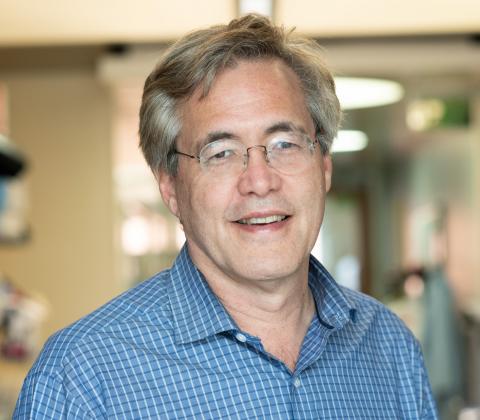Bruce R. Conklin, MD
Senior Investigator, Gladstone Institutes
Deputy Director, Innovative Genomics Institute
Professor, UCSF Departments of Medicine, Pharmacology and Ophthalmology
Seminar Information

Decoding human genetic disease allows us to develop models of the pathology that can be directly tested with gene correction or targeted drug therapy. Dominant negative mutations are particularly promising therapeutic targets since they are resistant to traditional therapies, yet precise excision of disease-causing allele could provide a cure. We are using patient-derived induced pluripotent stem cells (iPSCs) to model diseases in motor neurons that are particularly susceptible to dominant negative mutations causing diseases such as ALS and CMT (Charcot Marie Tooth) disease. By developing CRISPR genome surgery in human cells, we hope to devise improved cellular models as well as human therapies. By focusing on allele-specific gene excision we can select gene mutations that are highly penetrant, with clear phenotypes in cell types that can be readily derived from iPSCs. We use whole genome sequencing to identify common genetic polymorphisms that can be used to selectively inactivate the disease allele with CRISPR nucleases. The diseased cell types allow us to decode the cellular signatures of disease and determine if the excision of the disease allele restores cellular functioning. Genome surgery is a rapidly advancing field that uses state-of-the-art techniques that pushes the boundaries of cell and molecular biology. We use advanced microscopy, tissue engineering and single cell genomics to optimize precise editing. We are developing computational methods to select optimal CRISPR/Cas9 combinations in diverse populations. We aim to produce therapies that are safe and cost effective so that they can benefit the maximal number of people. In collaboration with clinical scientists and the Innovative Genomics Institute (https://innovativegenomics.org/) we are preparing large animal models and clinical grade reagents to prepare for human clinical trials.
Insights into cellular and molecular mechanisms: A major benefit of our approach to genome surgery is the mechanistic insights that we gain. The reversion of a cellular phenotype is proof that dominant negative allele was causative and that the disease process is reversible. Detailed cellular analysis often provides new insights into the mechanism of the disease. Genomic deletions require detailed knowledge of the non-coding elements that are often poorly understood (e.g., enhancers, LncRNAs, microRNAs). Each disease gene allows us to probe the 3D architecture and epigenetic state of the gene region, since distant DNA can be in close proximity, allowing efficient excision of larger genomic segments. Finally, the DNA repair machinery of each cell types will be better understood as we learn to orchestrate precise repair. Genome surgery is a new field of medicine that will drive a new level investigation into the molecular physiology of diverse cell types including motor neurons. Only by understanding the basic cellular and molecular physiology of these cells can we meet the challenges ahead.
Bruce R Conklin MD is a Senior Investigator at the Gladstone Institutes and a Professor at UCSF. Conklin is also the Deputy Director of the Innovative Genomics Institute founded by Jennifer Doudna, Ph.D. The Conklin Lab focuses on biomedical applications of CRISPR technology with an emphasis on motor neuron diseases such as ALS. Decoding human genetic disease allows Dr. Conklin to develop models of the pathology that can be directly tested with gene correction or targeted drug therapy. Dominant negative mutations are particularly promising therapeutic targets since they are resistant to traditional therapies, yet precise excision of disease-causing alleles could provide a cure. Dr. Conklin is using patient-derived induced pluripotent stem cells (iPSCs) to model cells such as motor neurons. Developing CRISPR genome surgery in human neurons provides a path to devise improved cellular models as well as human therapies.
